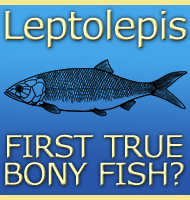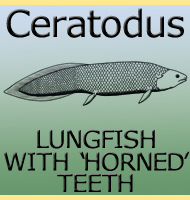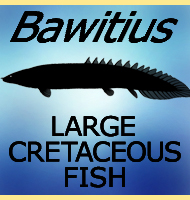


Lycoptera
Name: Lycoptera.
Phonetic: Ly-cop-teh-rah.
Named By: M�ller - 1847.
Synonyms: Prolebias.
Classification: Chordata, Actinopterygii,
Teleostei, Osteoglossomorpha, Lycopteriformes, Lycopteridae.
Species: L. davidi, L. fragilis,
L. fuxinensis, L. longicephalus, L. lunteensis, L.
middendorffi (type), L. muroii, L.
polyspondylus, L. sankeyushuensis, L. sinensis, L.
tokunagai. Note, other species have been named, and
are often treated as also valid by some sources.
Diet: Insectivore/Carnivore.
Size: A few centimetres long depending upon the
species.
Known locations: China, Korea, Mongolia and
Siberia.
Time period: Late Jurassic to Early Cretaceous.
Fossil representation: Thousands of individuals,
literally so numerous no one knows how many there are.
Lycoptera is a genus of small freshwater fish that seems to have been very common throughout Asia during the Late Jurassic and early Cretaceous periods. It is because of this abundance that Lycoptera is often used as an index fossil. What this means is that identifying the presence of Lycoptera in a specimen is enough for palaeontologists to identify the age of a fossil bearing rock to some point between the Late Jurassic and Early Cretaceous. By identifying the species and comparing them to other index fossils, an even more accurate age estimate can be obtained. This of course all depends upon the correct identification of the index fossils in the first place as an incorrect identification can cause wider problems, as happened with the naming of the dinosaur Raptorex.
Further reading
- The affinities of the fish Lycoptera middendorffi.
- Bulletin
of the American Museum of Natural History 51 (8). - Theodore
Dru Alison Cockerell - 1922.
- On the horizon of Protopteryx and the early
vertebrate fossil
assemblages of the Jehol Biota. Chinese Science Bulletin,
53(18): 2820-2827. - F. Jin, F. C. Zhang, Z. H.
Li, J. Y. Zhang, C. Li & Z. H. Zhou -
2008.
----------------------------------------------------------------------------
Random favourites
 |
 |
 |




